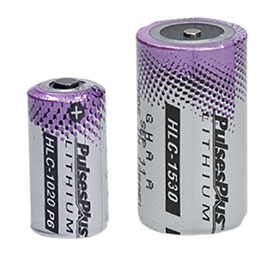

Tadiran has developed the latest in its PulsesPlus HLC battery range, doubling the power output of its previous offering.
Recently the company launched the C-type HLC which represented a huge improvement from a power perspective in comparison to former generations. Now it has introduced the P6 generation, small sized HLC-1020P6 which again doubles the power capability of the renowned PulsesPlus battery.
This technology enables a small component in a 1/2 AAA form factor to deliver power for all available radio protocols together with additional advantages: it needs less installation space which is especially important for IoT applications such as small smart sensors. Secondly, smaller cells with the power of considerably larger products are just more cost-efficient.
Requirements for an electrical energy source in the metering and IoT industry are demanding. Despite a long lifetime of up to 20 years these decentralised systems have the need to cover high current peaks of various radio protocols existing in the market. To provide a reliable solution for this industry, Tadiran invented the PulsesPlus technology which combines an ultra-low self-discharge lithium thionyl chloride battery with a hybrid layer capacitor (HLC). The battery stores the energy while the hybrid layer capacitor provides the power for pulses.

Both components are made from high-quality raw materials refined in a precisely engineered manufacturing process. The result is an optimal power supply for any long-term application in even harsh environments.
Nevertheless, there is always room for improvement to add value to the market by new innovative solutions. Consequently, in the past the lithium thionyl chloride system was optimised in capacity, self-discharge and voltage loss. The time was therefore right to focus research on the hybrid layer capacitor, responsible for providing power for radio and other pulses over the full temperature range from -40°C up to +85°C. The task was to gather more power capability into a given form factor.
Figure 1 shows the development of the Tadiran HLC performance over the years when undergoing a pulse of 350 mA at -40°C.
The performance of the first HLC in the year 2000, generating a voltage of approximately 1,3 V after 1 msec, has improved generation upon generation. While the B-type model (developed in 2008) was designed to deliver approximately 2,7 V under defined conditions, the P6-type is the first system that clearly exceeds the 3,0 V barrier.
At the same time the other advantages of HLC technology remain valid:
• Only one power-providing component up to 3,9 V level.
• No balancing needed.
• Extra low self-discharge over the entire lifetime.
• No negative ageing effects.
• High equivalent capacity to cover long pulses.
| Tel: | +27 11 923 9600 |
| Email: | [email protected] |
| www: | www.altronarrow.com |
| Articles: | More information and articles about Altron Arrow |
© Technews Publishing (Pty) Ltd | All Rights Reserved